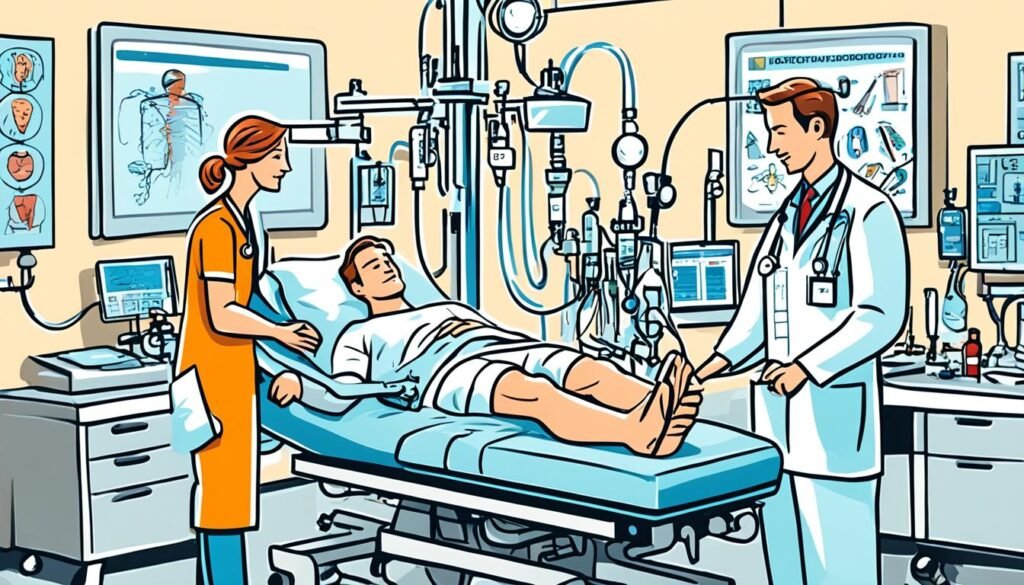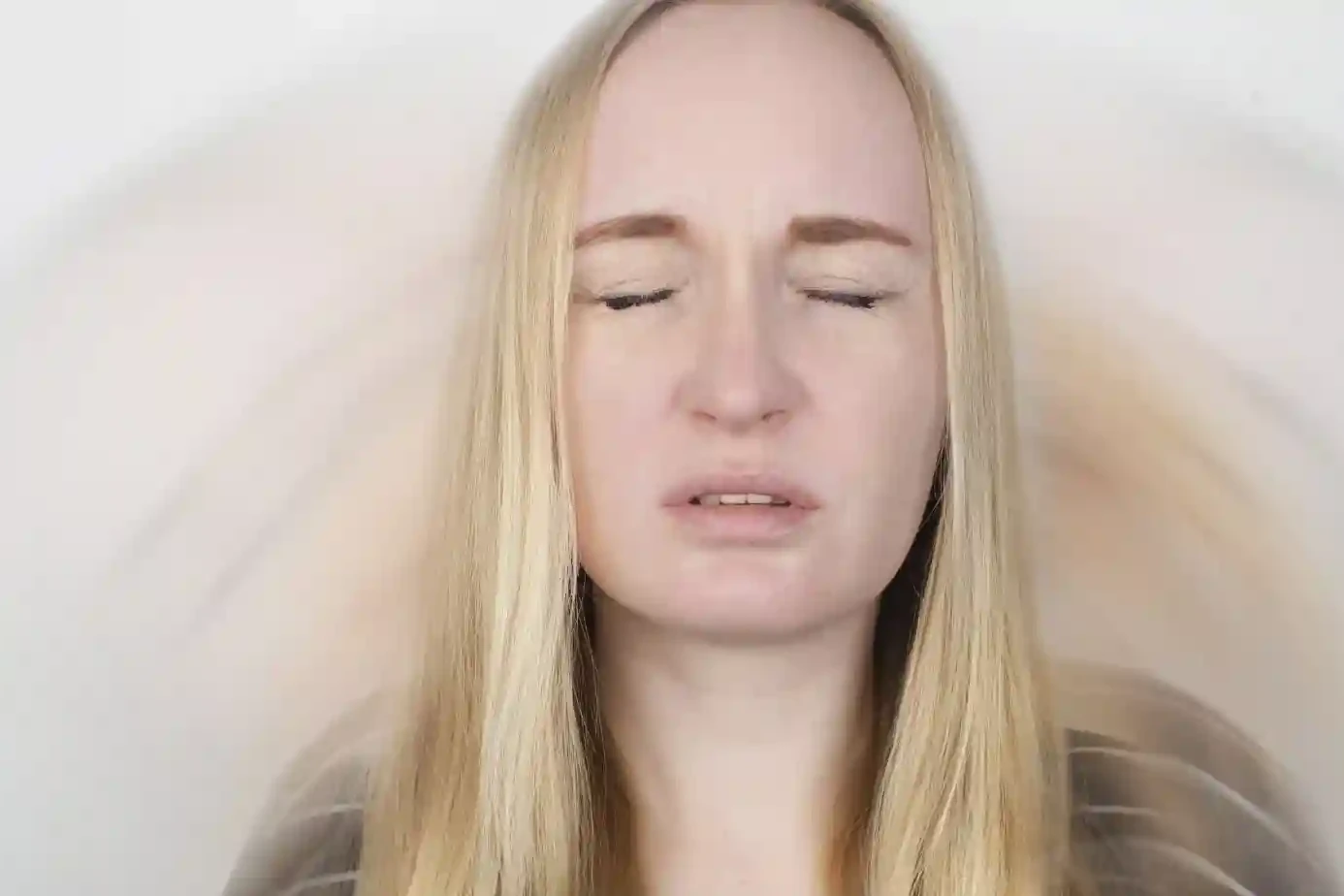Opsoclonus myoclonus syndrome (OMS) is a rare condition that often affects children and can make life feel confusing and scary for families. The eye movements. The body jerks. The sudden behavior changes. They come out of nowhere. But the good news is treatment options exist, and they can really help.
In this blog, we’ll walk through the causes, treatments, and therapies for opsoclonus myoclonus syndrome so you know exactly what to expect, what to do, and how to help your child recover.
Table of Contents
ToggleUnderstanding Opsoclonus Myoclonus Syndrome
What Is Opsoclonus Myoclonus Syndrome?
Opsoclonus myoclonus syndrome is a rare, serious brain condition. It mostly affects babies and toddlers. OMS causes fast, uncontrolled eye movements, sudden jerking in the body, and behavior changes.
- Rare, neuroinflammatory disorder
- Most common in children under 3 years old
- Happens in about 0.18 children per million each year (Source: NIH/NORD)
OMS is one of the rare pediatric neurological disorders that shows up quickly and needs medical care fast.
What Causes Opsoclonus Myoclonus Syndrome (OMS)?
The exact cause is tricky. But the body’s immune system seems to play a big role. Often, the immune system attacks the brain by mistake.
- Autoimmune encephalopathy: The immune system turns on the nervous system
- Can happen after a virus or infection
- In about 50% of kids, it’s linked to neuroblastoma, a childhood tumor
- Some cases happen for unknown reasons (idiopathic)
- While it mainly impacts infants and young children, it can also affect adults. Girls seem to get it more often than boys.
- A large percentage of kids with OMS have a specific tumor type (neuroblastoma or ganglioneuroblastoma).
When it’s linked to cancer, the OMS usually improves after the tumor is removed, but treatment is still needed.
Key Symptoms to Watch For
Opsoclonus myoclonus syndrome (OMS) has key features. They’re easy to miss at first but become clear with time.
Here are signs to look for:
- Involuntary eye movements (fast and random eye jerks)
- Jerky muscle movements (called myoclonus)
- Unsteady walking or trouble standing (ataxia)
- Angry outbursts or crying more than usual
- Sleep troubles
- Loss of skills (talking, walking, or feeding)
These are serious symptoms. The earlier they’re caught, the better the child’s chances of recovery.

Diagnostic Approach
Children with OMS often go undiagnosed for weeks. That delay can affect how well they recover. Early testing and treatment matter.
Doctors use a mix of observations and tests. There’s no single test for opsoclonus myoclonus syndrome.
- Clinical signs: eye jerks, myoclonus, and ataxia
- Brain MRI: may show inflammation
- Spinal tap (CSF analysis): looks for immune markers
- Paraneoplastic panel: checks for antibodies related to cancer
- Scans to detect neuroblastoma (CT, MIBG, urine catecholamines)
These tests help rule out other causes and confirm the diagnosis.
Importance of Early Diagnosis
Quick diagnosis improves outcomes. Waiting too long makes recovery harder.
- Best results when treatment starts within weeks
- Shortens opsoclonus myoclonus syndrome recovery time
- Prevents long-term issues like behavior problems or learning delays
Children treated early respond better to immune-based therapies.

Standard Treatment Protocols
If doctors find a tumor, they usually remove it through surgery. Tumors in young children with opsoclonus myoclonus syndrome (OMAS) are often low-stage. This means they are at an early stage, like neuroblastomas or ganglioneuroblastomas (stage I or II).
For these children, tumor chemotherapy or radiation therapy are not usually needed. Even if the tumor is removed, it may not help with the OMAS symptoms much.
Tumor Management
Doctors aim for early and strong immunotherapy to treat OMAS. The goal is to completely stop the neurological symptoms for a long time. Treatments can last 1-2 years.
They recommend using a mix of immunotherapies right after diagnosis. In North America, a treatment with three different medicines works well. It includes pulse-dose corticosteroids or high-dose ACTH, along with IVIG and rituximab. This three-agent plan has the best results for severe OMAS cases.
Immunotherapy Strategies
Rituximab is a key part of treatment for OMAS. It targets certain B cells and has been shown to help a lot. After this treatment, 80-90% of patients get better. Yet, some might need more treatment or slow removal of immunotherapies to keep getting better.
Medical Treatments for Opsoclonus Myoclonus Syndrome
There’s no one-size-fits-all. But a few proven treatments work well. Most kids need a combination.
First-Line Therapies
Doctors often start with medications that calm the immune system.
- Steroid treatment for OMS:
- Medications like ACTH and Prednisone
- Reduce brain inflammation
- Used for weeks or months depending on response
- IVIG (Intravenous Immunoglobulin):
- Delivers healthy antibodies to stop immune attack
- Given every few weeks for 3–6 months
- Rituximab:
- A monoclonal antibody
- Used when other treatments don’t help
- Targets B cells (immune cells causing the problem)
These drugs help slow or stop the immune attack on the brain.
Immunotherapy Protocols
Doctors usually combine treatments for better results.
| Immunotherapy Combo | Response Rate | Notes |
|---|---|---|
| Steroid + IVIG | 60–70% | First-line approach |
| Steroid + Rituximab | 70–80% | For moderate/severe cases |
| Triple therapy | Up to 90% | For tough, chronic cases |
(Source: Neurology Journal)
Using multiple treatments reduces the chance of relapse of OMS.
Treatment for Neuroblastoma-Associated OMS
When OMS is caused by cancer, tumor care is the first step.
- Surgery to remove the neuroblastoma
- Chemotherapy (in some cases)
- Immune therapy starts after surgery to calm symptoms
Once the tumor is gone, brain inflammation goes down, but some children still need medicine to prevent symptoms from coming back.

Therapeutic Approaches to Improve Recovery
Medicine alone isn’t enough. Kids need therapy to re-learn basic skills.
Physical Therapy and Motor Rehabilitation
Kids with OMS often lose balance and strength. Therapy helps bring those skills back.
- Helps with walking and posture
- Improves coordination
- Uses playful activities that kids enjoy
Physical therapy for OMS is done 2–3 times a week, depending on severity.
Occupational Therapy for Daily Functioning
OMS affects how kids use their hands and bodies for daily tasks.
- Improves hand coordination
- Helps with dressing, feeding, brushing teeth
- May use tools to make tasks easier
- Includes games that train the brain and hands
Occupational therapy supports independence and builds confidence.
Behavioral and Cognitive Support
Brain inflammation can affect emotions, sleep, and speech.
- Speech therapy helps if talking or eating is delayed
- Behavioral interventions reduce outbursts and improve focus
- Parent-child interaction therapy teaches calming strategies
Kids may need a mix of all three for full support.
Nutritional and Complementary Interventions
Food can help support brain healing.
- Anti-inflammatory diets (low sugar, more fruits/veggies)
- Omega-3 fats (like fish oil)
- Antioxidants (vitamins A, C, E)
These support recovery but don’t replace medication.

Long-Term Management of OMS
Even after symptoms improve, ongoing care matters. OMS can come back.
Relapse Risk and Monitoring
OMS can return, especially if treatment is stopped too early.
- Relapse risk: 40–70% without ongoing therapy
- Regular checkups: every 1–2 months for the first year
- Watch for small changes: eye twitching, falling, or sleep trouble
Long-term management of OMS is key to preventing lasting damage.
Psychosocial and Educational Support
Kids recovering from OMS may struggle in school or feel isolated.
- School support programs (IEPs, speech class)
- Counseling for behavior and focus
- Parent training groups
- Support networks for families
Rebuilding social skills is just as important as motor skills.
OMS Prognosis: What the Data Says
With proper treatment, most kids improve a lot.
- 80–90% can reach remission
- About 20–30% may still have behavior or learning issues
- Early treatment = best chance at full recovery
Every child is different. But most families see major improvement within 1 year.

Opsoclonus Myoclonus Syndrome in Children
Opsoclonus myoclonus syndrome (OMS) can occur in children with different causes. It’s essential to understand these causes to provide the best treatment and outcomes.
Paraneoplastic Etiology
About 50-80% of young children with OMS have tumors. These tumors are usually not very harmful, unlike those in adults. This difference is important to note.
Idiopathic and Post-Viral Cases
For some children, OMS is labeled ‘idiopathic’. This means doctors don’t know the exact cause. It might also be linked to viral infections. But, sometimes the tumor causing it can disappear on its own.
Neurodevelopmental Outcomes
If OMS starts in the first two years of life, it can seriously affect speech and language. It might also lead to lasting issues like not being able to focus well or low IQ. Some children might face problems like ADHD or OCD.
Opsoclonus Myoclonus Syndrome in Adults
Opsoclonus myoclonus syndrome (OMS) isn’t just for kids. Adults can get it too. In grown-ups, it’s often tied to lung or breast cancer. This is known as a paraneoplastic cause.
Unlike in kids, where these tumors are usually not very harmful, in adults they might spread more and can be cancerous. So, in adults with OMS, the reasons behind it are more serious.
Paraneoplastic Associations
In adults, OMS is more linked to cancers of the lungs or breasts. These cancers can be more severe and have a higher chance of spreading. This is unlike what’s usually seen in kids with OMS.
Idiopathic Cases
For older kids and teens, it’s often a viral infection that triggers OMS. Yet, in some adults, the cause remains a mystery. Doctors then label it as idiopathic, meaning they can’t find a clear reason.

Prognosis and Long-Term Management
In kids with opsoclonus myoclonus syndrome, the outlook isn’t always great if they only get basic treatment. About 50-75% of them see their condition coming back. But, starting with strong treatments at the beginning makes things better. To keep them doing well, they might need extra treatment for 1-2 years or more, then a slow decrease in those treatments.
Relapse Prevention
Doctors improve children’s chances by using many treatments together from the start. This can lower the chance of the problem returning. So, it’s key to act quickly and firmly to help kids stay well and avoid relapses.
Supportive Care
Some kids with opsoclonus myoclonus might face tough emotional and behavioral issues like sadness, not listening, or anger. But, with the right care and talk therapy, they can feel better. Also, parents of very sick children might find it hard to see them as kids who can do well. For them, counseling can guide how to best help their child grow and learn.
Neuroinflammation and Biomarkers
Diagnosing opsoclonus myoclonus syndrome (OMS) needs a detailed method. This includes looking for neuroinflammation. A spinal tap is key to check the cerebrospinal fluid (CSF) for inflammation signs. In this process, doctors can find certain biomarkers. These help in the OMS diagnosis.
Role of CSF Analysis
CSF analysis shows if there are oligoclonal bands present. These point to more B cells making antibodies in the central nervous system. Also, testing CSF for CD19+ B cells highlights opsoclonus myoclonus syndrome activity levels.
Autoantibody Testing
In certain cases of opsoclonus myoclonus syndrome, autoantibodies have been found. But, general autoantibody tests may not be the first choice for routine checks due to cost. It’s better to use such tests when the case seems atypical or when the initial diagnosis isn’t clear.
Opsoclonus Myoclonus Syndrome and Neuroblastoma
The link between opsoclonus myoclonus syndrome (OMAS) and neuroblastoma (NB) is complex but important to understand. OMAS is often connected to hidden stages of NB, seen in about half of cases. Roughly 2-3% of children with NB will show the severe OMAS symptoms too.
Tumor Staging and Risk Stratification
Children with OMAS usually have lower stage NBs or ganglioneuroblastomas, falling under stages I or II. Properly staging and risk assessing these tumors is crucial. It helps doctors pick the best treatments. These treatments aim to tackle both the NB and OMAS together.
Treatment Approaches for Neuroblastoma
In cases involving OMAS and NB, children typically avoid aggressive chemo or radiation. Instead, doctors opt for removing the tumor surgically. However, just removing the tumor might not fix the OMAS symptoms. A mix of tumor care and immunotherapies is often needed for the best outcomes.
Multidisciplinary Care Team
Efficiently handling opsoclonus myoclonus syndrome means collaborating with a wide team. This team involves many experts like neurologists, oncologists, and more. They focus on giving holistic care to better the patient’s life. They work together to tackle the various health, personal, and social issues related to this rare disorder.
Neurologists are key in spotting and creating a plan to treat opsoclonus myoclonus syndrome. Oncologists step in if a tumor, like in neuroblastoma, is the cause. In these cases, oncologists and other doctors help with treatments that fight the immune system’s wrong responses.
Therapists help patients with their movement, coordination, and speaking struggles linked to opsoclonus myoclonus syndrome. They provide exercises and therapy to boost the patient’s skills and wellbeing. Nurses, psychologists, and social workers can also join the team. They offer extra support and information to the patient and their relatives.
With this group of specialists working together, they can design a specific treatment for each patient. This patient-focused approach improves their chances of getting better and having a positive long-term health outlook.
Opsoclonus Myoclonus Syndrome in COVID-19
New studies show a possible link between opsoclonus myoclonus syndrome (OMAS) and COVID-19. After getting infected with SARS-CoV-2, some adults develop OMAS. In a review from 2021, 51 cases of myoclonus or ataxia were found in COVID-19 patients. Most were men and their average age was around 60.
The review noted that myoclonus could happen alone, with ataxia, or with cognitive changes, all within a month of COVID-19 symptoms. Chest scans of these patients highlighted common COVID-19 patterns. These included certain lung issues like ground-glass opacities and severe lung damage.
Most people with mild to moderate COVID-19 who later developed OMAS got better within 2 months. They improved with or without special treatment. This indicates that OMAS from COVID-19 usually follows a mild, self-resolving path.
Scientists are still looking into how COVID-19 might trigger opsoclonus myoclonus syndrome. Figuring this out could help manage OMAS better. It might also offer key details on how this rare neurological condition fits into the bigger COVID-19 picture.
Paraneoplastic Opsoclonus Myoclonus Syndrome
Tumor Types
Paraneoplastic opsoclonus myoclonus syndrome (POMS) is linked more often to lung or breast cancers in adults. This is different from the cases in young children, where neuroblastomas are more common. Adult tumors tend to spread more and are more aggressive than those seen in kids.
Diagnostic Workup
For adults suspected of having POMS, a detailed diagnostic workup is needed. This includes tests like PET scanning to find any hidden tumors. This step is vital since POMS is mainly tied to these cancer types in adults.
How Dr. Chandril Chugh Helps Families Facing OMS
When your child is diagnosed with opsoclonus myoclonus syndrome, you don’t just need medicine. You need a full plan and a doctor who understands the science and the emotion.
Dr. Chandril Chugh is a US-trained, board-certified neurologist who has helped many families manage complex conditions like OMS. His deep knowledge of pediatric neurological disorders and commitment to whole-child care make a huge difference.
Reach out now to schedule a one-on-one consultation with Dr. Chugh.
FAQ
What is opsoclonus-myoclonus-ataxia syndrome (OMAS)?
OMAS is a rare disorder that affects the nervous system. It causes rapid and uncontrolled eye movements, balance problems, muscle spasms, and trouble talking. This disorder can get in the way of daily activities and life.
How long does OMS treatment usually take?
Recovery takes months, sometimes over a year. Most children improve a lot in the first 3–6 months, but some need longer support. Regular therapy and medication adjustments help. Talk to Dr. Chugh to understand your child’s treatment path.
Can OMS come back after treatment?
Yes, unfortunately. The relapse of OMS can happen in up to 70% of cases without ongoing care. Monthly follow-ups and continued low-dose treatments help reduce this risk.
What are the early signs of OMS in toddlers?
Look out for rapid eye movements, jerky body twitches, and sudden loss of speech or walking skills. These are common OMS symptoms in toddlers.
Is OMS related to cancer?
In half of all pediatric cases, yes. OMS is often connected to neuroblastoma, a type of tumor. Even if the tumor is treated, OMS needs separate care to prevent brain inflammation.
What are the common causes of OMAS?
In kids, OMAS is often linked to tumors, like neuroblastoma, or can happen without a known cause. It can also be triggered by different viruses. Adults might see it linked to more serious cancers in the lungs or breasts.
How is OMAS diagnosed?
Doctors diagnose OMAS by looking at its common symptoms. They might also do tests like brain scans, examining the fluid around the brain, and checking for certain antibodies in the body.
What is the standard treatment approach for OMAS?
The main goal in treating OMAS is to start powerful immune treatments early. These treatments often include drugs like corticosteroids, IVIG, and rituximab. The aim is to put the disorder into a deep remission.
How does OMAS affect children differently than adults?
Children with OMAS are often linked to less serious tumors. These tumors can be inactive. For adults, OMAS is typically seen with more severe cancers that might have spread further.
Can OMAS occur in the context of COVID-19 infection?
Yes, some COVID-19 patients have reported symptoms like those in OMAS. Researchers are still studying if there’s a direct link between COVID-19 and OMAS.
Source Links
- https://www.ncbi.nlm.nih.gov/pmc/articles/PMC8906188/
- https://www.ncbi.nlm.nih.gov/pmc/articles/PMC8625142/
- https://www.news-medical.net/health/What-is-Opsoclonus-Myoclonus-Syndrome.aspx
- https://en.wikipedia.org/wiki/Opsoclonus_myoclonus_syndrome
- https://rarediseases.org/rare-diseases/opsoclonus-myoclonus-syndrome/
- https://www.ncbi.nlm.nih.gov/pmc/articles/PMC5783315/
- https://www.childneurologyfoundation.org/disorder/opsoclonus-myoclonus-syndrome/
- https://www.ninds.nih.gov/health-information/disorders/opsoclonus-myoclonus
- https://www.ncbi.nlm.nih.gov/pmc/articles/PMC5314861/
- https://www.ncbi.nlm.nih.gov/pmc/articles/PMC9282143/
- https://pubmed.ncbi.nlm.nih.gov/33492608/
- https://www.ncbi.nlm.nih.gov/pmc/articles/PMC9800942/
- https://www.ncbi.nlm.nih.gov/pmc/articles/PMC4552143/
- https://www.sciencedirect.com/topics/medicine-and-dentistry/opsoclonus-myoclonus-syndrome
- https://www.scielo.br/j/abo/a/VtwtLXmTxBH36MV45ckKp6t/
About The Author

This article is medically reviewed by Dr. Chandril Chugh, Board-Certified Neurologist, providing expert insights and reliable health information.
Dr. Chandril Chugh is a U.S.-trained neurologist with over a decade of experience. Known for his compassionate care, he specializes in treating neurological conditions such as migraines, epilepsy, and Parkinson’s disease. Dr. Chugh is highly regarded for his patient-centered approach and dedication to providing personalized care.
→ Book a consultation to discover which remedies suit your needs best.




